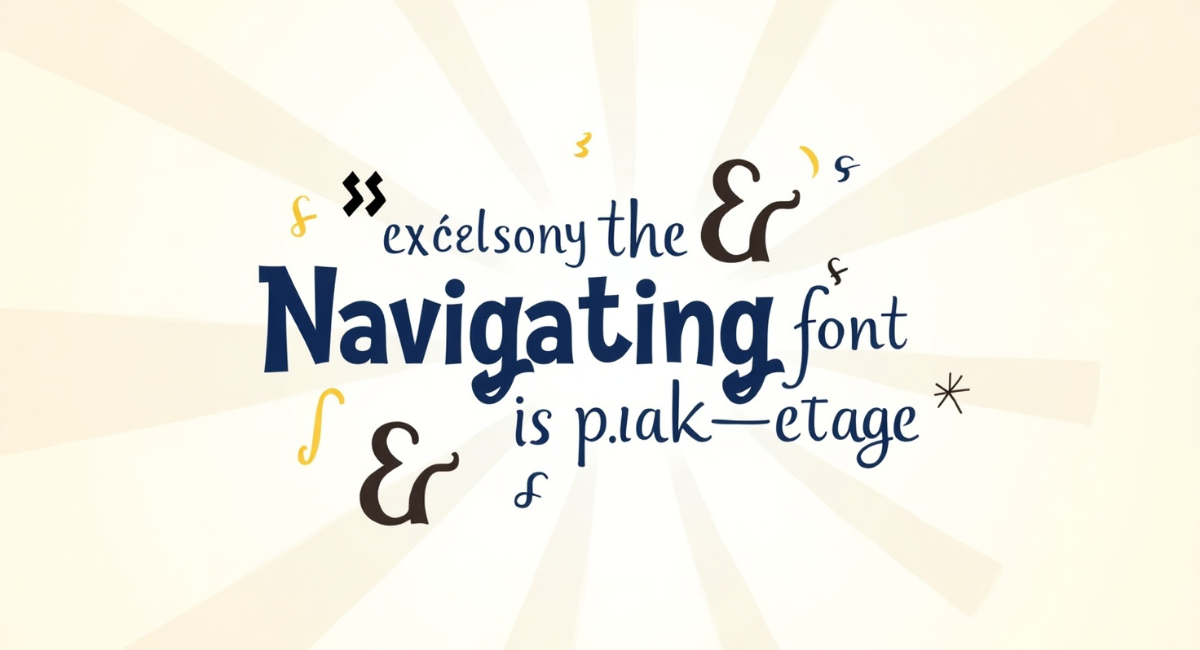It encompasses the design of letters, numbers, and symbols, playing a crucial role in how written content is perceived. Fontlu are not merely aesthetic choices; they significantly impact readability, branding, and the overall effectiveness of communication in design. Understanding fonts is essential for anyone involved in graphic design, marketing, or any form of visual communication.
Types of Fonts
Fontlu can be categorized into several types, each serving different purposes and conveying distinct messages.
Monospace Fonts
Monospace fonts, such as Courier New, feature characters that occupy the same amount of horizontal space.
Display Fonts
Display Fontlu, such as Impact, are designed to attract attention and are often used for headlines and advertisements.
Fontlu Formats
Understanding font formats is essential for ensuring compatibility across different platforms and applications.
TrueType (TTF)
TrueType fonts (TTF) are widely used and supported across various operating systems. They offer high-quality rendering and scalability, making them suitable for both print and digital use.
OpenType (OTF)
OpenType fonts (OTF) are an extension of TrueType, supporting advanced typographic features such as ligatures and alternate characters. They are increasingly popular among designers for their versatility and rich character sets.
Web Open Font Format (WOFF/WOFF2)
WOFF and WOFF2 are optimized font formats for web use, providing better compression and faster loading times. These formats are essential for web designers looking to enhance website performance while maintaining font quality.
Scalable Vector Graphics (SVG) Fonts
SVG fonts are based on vector graphics, allowing for scalable and resolution-independent text. They are often used in web design and applications where high-quality graphics are essential.
How to Choose the Right Font
Purpose
The purpose of the text—whether for readability, branding, or aesthetics—should guide font selection. For instance, a formal report may require a serif font for professionalism, while a creative project might benefit from a decorative font.
Font Licensing & Usage Rights
When using Fontlu, it is essential to understand licensing and usage rights to avoid legal issues.
Free vs. Paid Fonts
Fonts can be categorized as free or paid. Free fonts may have limitations on commercial use, while paid fonts often come with licenses that allow for broader usage.
Commercial Use Restrictions
Many fonts have specific restrictions regarding commercial use. Always check the licensing agreement to ensure compliance, especially for branding and marketing materials.
These fonts are often free to use and can be integrated into various projects without licensing concerns.
Tools & Resources
Several tools and resources can assist designers in finding and using fonts effectively.
Font Libraries
Font libraries like Google Fonts, DaFont, and Font Squirrel offer extensive collections of fonts for various projects. These platforms allow users to browse, preview, and download fonts easily.
Font Identification Tools
Tools like WhatTheFont and Font Matcherator help users identify fonts from images or designs. These resources are invaluable for designers looking to replicate or find similar fonts.
Design Software
Design software such as Adobe Illustrator, Canva, and Figma provides built-in font libraries and tools for font manipulation, making it easier for designers to create visually appealing content.
Trends in Typography
Variable Fonts
Variable fonts allow for multiple styles and weights within a single font file, offering flexibility and reducing the number of font files needed for a project.
Custom/3D Fonts
Custom and 3D fonts are gaining popularity, providing unique visual experiences that can enhance branding and design.
Minimalist vs. Maximalist Trends
Current trends in typography often oscillate between minimalist designs, which favor simplicity and clarity, and maximalist designs, which embrace bold and intricate styles.
Conclusion
Fonts play an evolving role in design, influencing how messages are conveyed and perceived. Understanding the different types of fonts, their formats, and best practices for usage is essential for effective communication in any design project. By staying informed about trends and utilizing the right tools, designers can enhance their work and create impactful visual experiences.

